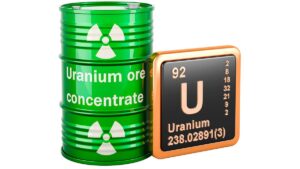Iron ore bounced back last night and global steel output is still rising despite China cuts

Pic: John W Banagan / Stone via Getty Images
Iron ore bounced back overnight, reversing in the direction of US$150/t just days after suffering its biggest single day slide since index prices began a decade ago.
Commbank said the spot price rose 8.9% or US$12.10 to US$148.60, while Fastmarkets reported benchmark 62% fines prices in northern China up US$9.42 to US$146.13/t.
Premium 65% fines and discounted 58% fines grades also rose by US$10.10 and US$7.27 to $US166.10/t and US$113.91/t, respectively, with only the lump ore premium continuing to contract.
It came after a day of bullish activity for Dalian Iron Ore Futures, with the most traded January contract a 6.2% gainer on Tuesday.
Iron ore companies were a sea of green this morning with Fortescue Metals Group (ASX:FMG) up 57c or 2.89% to $20.33 as of 11.30AM AEST.
Rio Tinto (ASX:RIO) gained 3.15%, with BHP (ASX:BHP) up 1.22% and Mineral Resources (ASX:MIN) up 3.57%.
Among the juniors Fe Limited (ASX:FEL) was almost 11% higher while Tasmanian producers Venture Minerals (ASX:VMS) and Grange Resources (ASX:GRR) were 8.45% and 5.39% better off.
Grange, which produces mega-premium iron ore concentrate and pellets, reported a 207% increase in half year profits from $67 million in 2020 to $205.9 million in the first six months of 2021.
Global steel production rises despite China cuts
China’s well-reported intention to cut steel output in the back end of 2021 appears to be the major driver of recent hits to the iron ore price.
But globally steel production is recovering back to pre-pandemic levels and beyond as steelmakers enjoy strong domestic prices amid infrastructure splashes in recovering economies across the Americas, Asia and Europe.
According to figures from the World Steel Association steel production rose 3.3% year on year in July to 161.7Mt.
That was weighed down by an 8.4% YoY drop in China, which remains 8% up on 2020 production levels in the year to date.
Capital Economics chief commodities economist Caroline Bain noted that on month on month records global steel production slowed 6.8% from June levels after a 0.5% decline between May and June.
Bain believes high steel prices may incentivise supply and stabilise output, but that China is unlikely to return to the elevated levels (+11.8%) seen in the first half of the year.
“A slump in China’s steel production in July led to a dramatic slowdown in growth in global steel output,” he said.
“While China’s production may stabilise or rebound a little in the coming months, it appears unlikely to return to the levels seen in the first half of this year.”
The USA was an outlier, with its output climbing 2.2% to 7.5Mt month on month in July (a 37.9% increase year on year). Even with a slowdown in Chinese output, Bain said global steel production should still rise in 2021.
“Given the strong growth in China’s production in the first half of the year, and the low base in 2020, global steel production should still rise this year, but a contraction may yet be on the cards in 2022,” she said.
Global steel output stronger than pre-pandemic levels
Commbank analyst Vivek Dhar was more positive about the WSA figures, noting steel production growth outside China was up 5.3% on July 2019.
“Steel production growth outside China continued to impress, lifting 19%/yr in July,” he said.
“And in a sign that the recovery in crude steel output outside China is genuine, steel production lifted 5.3% relative to July 2019. That’s up from 0.5% in May and 3% in June.”
Dhar said trade figures show China remains reliant on Australian iron ore, purchasing 77% of our exports over a 12 month period to the end of June.
A longer term threat to demand for steelmaking ingredients like iron ore and coal would come from the decarbonisation of the steel sector. Dhar said this would likely see a shift in preference to higher grade iron ore products.
“Reducing emissions in the steel sector will first likely see a stronger preference for high grade iron ore and for products like iron ore lump and pellets.”
“We’re also likely to see steel mills in these countries use more scrap steel. Moving steel production to a carbon free process is still a significant challenge.”
“Carbon free hydrogen and molten oxide electrolysis have emerged as the front runners from the technology side. However, we’d need to wait until later this decade to know what a carbon free pathway for steel is technically and economically viable.”
Related Topics
UNLOCK INSIGHTS
Discover the untold stories of emerging ASX stocks.
Daily news and expert analysis, it's free to subscribe.
By proceeding, you confirm you understand that we handle personal information in accordance with our Privacy Policy.








